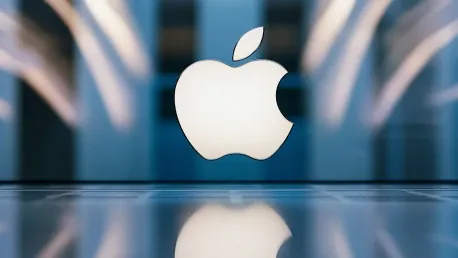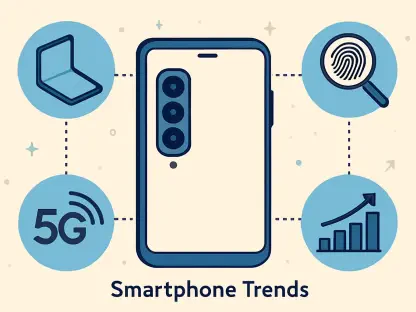Apple Fellow Phil Schiller’s recent courtroom testimony has shed light on the company’s internal debates over the App Store’s commission rates, particularly in the context of the ongoing legal battle with Epic Games. Schiller’s concerns about the compliance risks and potential negative impacts of charging a 27% commission on purchases made outside of the App Store were central to his testimony. This examination is crucial in understanding the dynamics between Apple and app developers and the financial policies governing the App Store.
Internal App Store Commission Debates
Schiller’s Concerns and Compliance Risks
Phil Schiller, who leads the App Store, expressed significant apprehensions about the App Store acting as a “collection agency” to collect commissions from developers making purchases outside the App Store. Schiller feared that this role would create a confrontational relationship between Apple and developers, altering their dynamic negatively. His testimony highlighted the potential administrative burden of enforcing such commissions and raised questions about whether this approach could tarnish Apple’s image and developer relations.
The proposal to lower the commission rate to 27% from the standard 30% came after the 2021 ruling in the Epic Games-Apple case. This ruling required Apple to allow alternative payment methods linked by developers in their apps, aiming to reduce Apple’s dominance and enable developers to direct customers to other payment processes. Despite this adjustment, Schiller’s concerns remained, particularly about the logistics of tracking external transactions and the resistance Apple might face from developers who opposed these new commission structures.
Apple’s Technical Compliance and Criticism
Although Apple technically complied by adjusting its App Store Guidelines to allow developers to add links to their websites, it only reduced the commission by 3%, to 27%. This move was met with criticism, particularly from Epic Games CEO Tim Sweeney, who accused Apple of undermining the 2021 order’s intent. According to Sweeney, the slight reduction did not go far enough to alleviate the financial pressures on developers or foster genuine competition within the App Store ecosystem.
This led to further legal confrontations to assess Apple’s adherence to fostering competition within the App Store ecosystem. Critics argued that the minor adjustment in commission rates was insufficient in addressing the court’s intent to weaken Apple’s control over in-app payment mechanisms. They contended that Apple’s approach was a calculated move to maintain its powerful position within the app marketplace while giving the semblance of compliance with the ruling. The ongoing debates and courtroom disputes continued to explore whether Apple’s actions truly aligned with the spirit of fostering a fairer competitive environment.
Operational Challenges and Financial Impacts
Administrative Burdens and Developer Relations
Schiller’s resistance to external commissions highlighted concerns about the administrative burden of tracking developer payments and auditing transactions. He worried that the App Store could evolve into an organization focused on debt collection, potentially souring relations with developers. This concern stemmed from the logistical complexities involved in ensuring that developers complied with the commission requirements, which could place additional strain on the App Store’s operations and impact its efficiency.
Internal discussions among Apple executives, including CEO Tim Cook and former CFO Luca Maestri, concluded that Apple should charge commissions on purchases made outside the App Store. This decision reflected a broader concern over financial impacts and maintaining control over the app marketplace. Despite acknowledging the challenges, the executives believed that implementing the commission on external purchases was necessary to preserve Apple’s revenue streams and prevent potential revenue loss from developers circumventing the App Store’s payment systems.
Financial Models and User Experience
In response to the court’s directives, Apple conducted thorough analyses, including financial models predicting developer reactions to external payment links. These models explored customer behavior, anticipating higher transaction abandonment rates for non-IAP methods, making IAP methods more attractive despite the higher cost. Apple’s financial models assessed various scenarios to understand how developers and users might respond to the new guidelines and the potential revenue implications for the company.
Internal debates also considered factors such as the placement and formatting of external links. Apple evaluated the timing of permitted transactions, initially considering a 72-hour window post-link click for the 27% commission, later extending it to seven days in the final guidelines. These strategic decisions aimed to balance compliance with the court’s ruling while minimizing potential disruptions to the App Store’s operations and user experience. By carefully analyzing these aspects, Apple sought to ensure that it maintained its competitive edge and continued to generate substantial revenue from app transactions.
Broader Concerns and Strategic Approaches
User Warnings and Developer Decisions
Changes to user warnings on external links highlighted Apple’s tactical approach. The initial warning stated that users were “no longer transacting with Apple,” which evolved to subtly imply potential privacy and security risks with third-party transactions, aiming to dissuade users. This change in messaging was part of Apple’s broader strategy to influence user behavior and encourage transactions within the App Store, thereby preserving its commission revenue.
Apple’s internal concerns about extending its influence to the broader internet were also discussed, considering the implications beyond the App Store and potentially affecting its legal and public standing. These concerns underscored the significant impact of the court’s ruling not only on Apple’s financial operations but also on its reputation and perceived authority in the digital marketplace. By adjusting its approach to user warnings and external transactions, Apple aimed to navigate the legal landscape while maintaining its dominant position.
Balancing Compliance and Revenue
Phil Schiller’s testimony shed light on Apple’s internal discussions about the App Store’s commission rates. One of Schiller’s key points of concern was the compliance risks and potential negative effects of charging a 27% commission on purchases made outside the App Store. He elaborated on how such a rate could impact both the company and app developers. This testimony is vital for understanding the relationship between Apple and developers, as well as the financial policies that regulate the App Store. Schiller’s insights underscore the complexity of balancing business interests and compliance, illustrating the broader implications for stakeholders in the app development ecosystem. This examination sheds light on the foundational principles and financial strategies, highlighting the contentious nature of app commission structures in the digital marketplace.









